Do you want to know why your Ancestry DNA results changed? In this post, we will talk a little bit about why your ethnicity estimate changes, and how to know if it is up-to-date according to Ancestry's latest research.
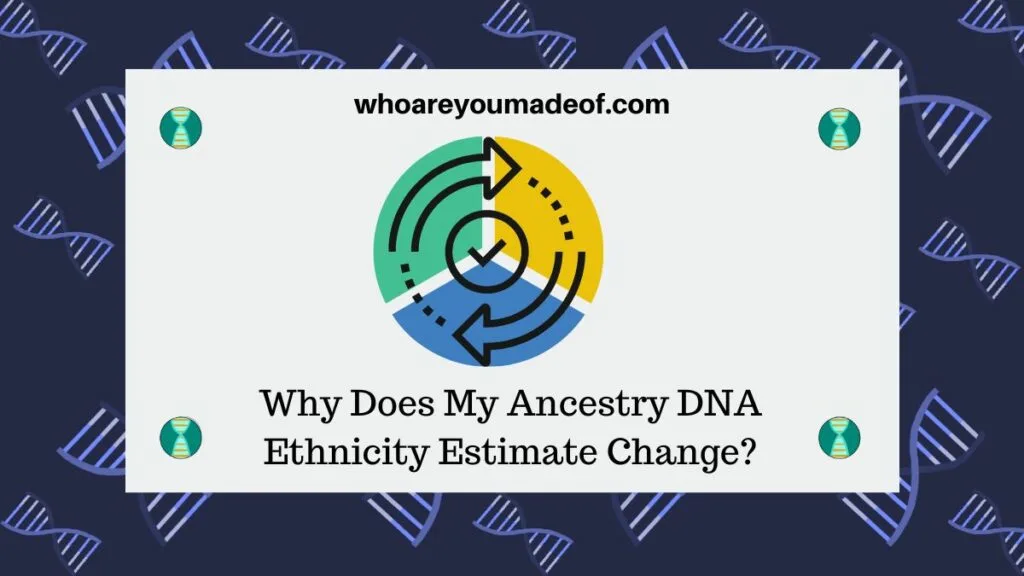
Our Ancestry DNA ethnicity estimates go through periodic changes based on updated science and technological advances. The past few years, there have been updates to our results about once per year.
The most recent major update is the October 2025 Ancestry DNA results update. As with any update from Ancestry, you might see different regions on your results, find that previous regions have slightly different names, find the percentage to be different, or see a region completely removed from your results.
Note: The term "ethnicity estimate" has been replaced with "ancestral regions" report. So, from this point on in the article, we will use this terminology interchangeably.
Below, find out more about exactly how and why these changes occur. Plus, learn what these changes mean for your family history research.
Why did my Ancestry ethnicity estimate change?
You might wonder why your Ancestry results keep changing. This is normal, and it will happen at least once per year over the course of time.
One of the things that I like to stress to my readers here on this site is that Ancestry DNA calls the ancestral regions report an "estimate" for good reason. It's only an estimate, and this is especially good to keep in mind that the technology to detect a DNA "ethnicity" is relatively new.
The Ancestry DNA service was launched officially in May of 2012, only about ten years ago. Their DNA testing service has evolved significantly since then, and they have added many new features and tools to their DNA site, and one important feature that has continued to improve is the ethnicity estimate technology.
As research into human migration and genetics continue, and as Ancestry DNA adds to and improves the quality of the base reference samples used to compare your DNA and determine ethnicity, we should all expect continued changes to our results. Ancestry does take the naming of its regions very seriously, but we should also take a look at the map that accompanies our results to see if the area corresponding to the regions overlaps where we know our family to be from.
I know that I want the most accurate ancestral regions report possible, given available technologies, and so I tend to view the ethnicity estimate changes as a net positive, rather than feeling like something has been taken away from me.
How can I tell if my Ancestry DNA ethnicity estimate is up-to-date?
You can check to see if your Ancestry DNA results have been updated by viewing your ancestral regions report. At the end of your ethnicity estimate, you should see the date when your results were last updated, as well as a link to view the previous version of your results.
This feature of the Ancestry DNA site was added in 2018, and I think it's pretty neat to be able to see whether or not your ethnicity results reflect the most current research in DNA ethnicity. All you have to do is log in to your Ancestry DNA account, and visit your DNA results summary page.
Once you are on your summary page, click "Ancestral Regions", which is the blue text above your pie chart. This will take you to your full ethnicity/ancestry results.
Once you are on your full ethnicity result page, there is a message that will tell you whether your results are up-to-date:
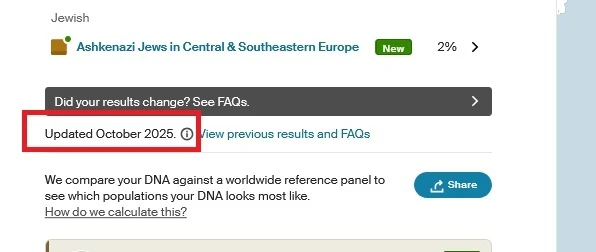
The more complete the data included in the reference population datasets, the better ethnicity results can be provided by Ancestry DNA. As of October 2025, Ancestry DNA results are calculated using more than 185,000 reference samples and these are compared with more than 3600 regions and Ancestral Journeys from around the world.
This information usually includes how many regions they currently test for, and how many reference samples are in their database. Reference samples are part of what they use to determine which regions are shown in your DNA, so it's neat to see how many samples they have.
My Ancestry DNA ethnicity estimate changed!
Over the course of the years, I have seen many changes in my own and my family member's ethnicity results. My "Irish" went away, and turned into "Ireland/Scotland/Wales" and then, eventually back into "Ireland" and "Scotland".
My mom's "Southeastern Bantu" went from 2% to 1%, and then eventually disappeared completely from her results. My grandmother's "Italy/Greece" disappeared and turned into Europe South, and then eventually that region disappeared from her results, too.
Below, you can see five iterations of my ethnicity estimates. You will see some similarities as they have gone through changes, but there are also some big changes.
The bottom one is my most recent:
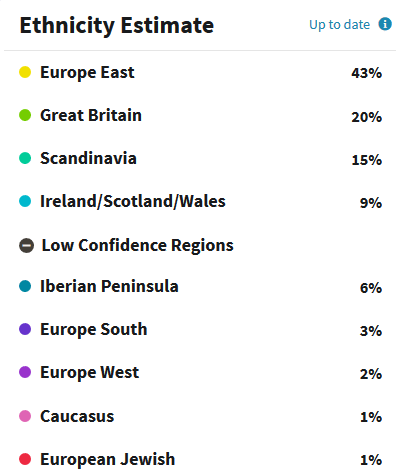
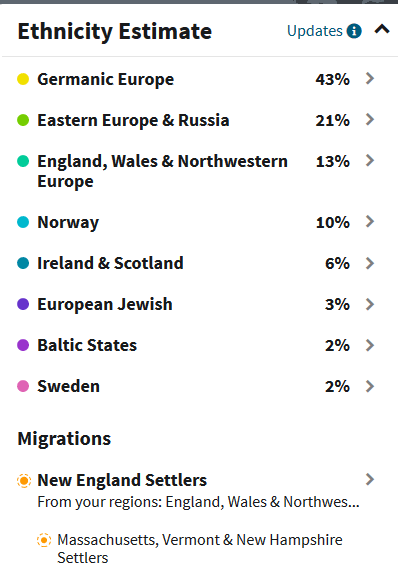
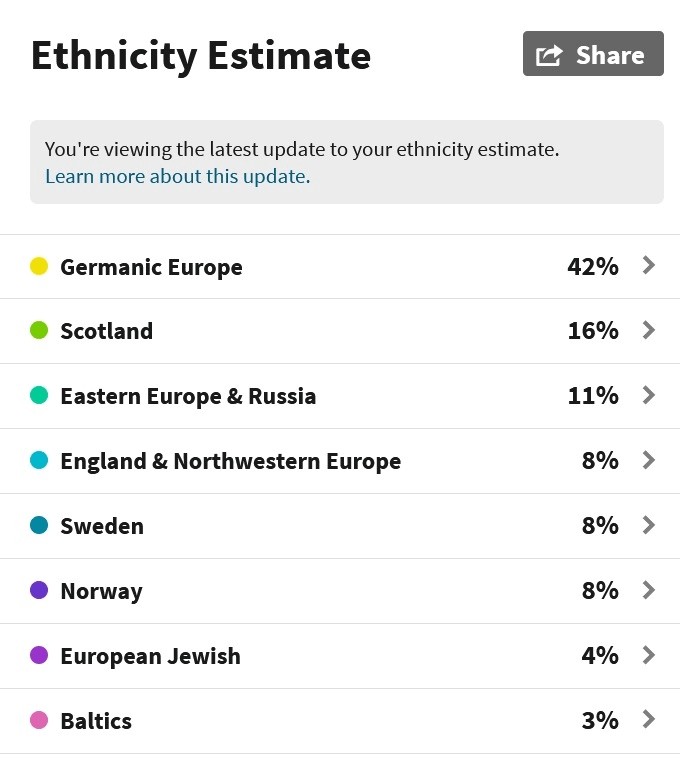
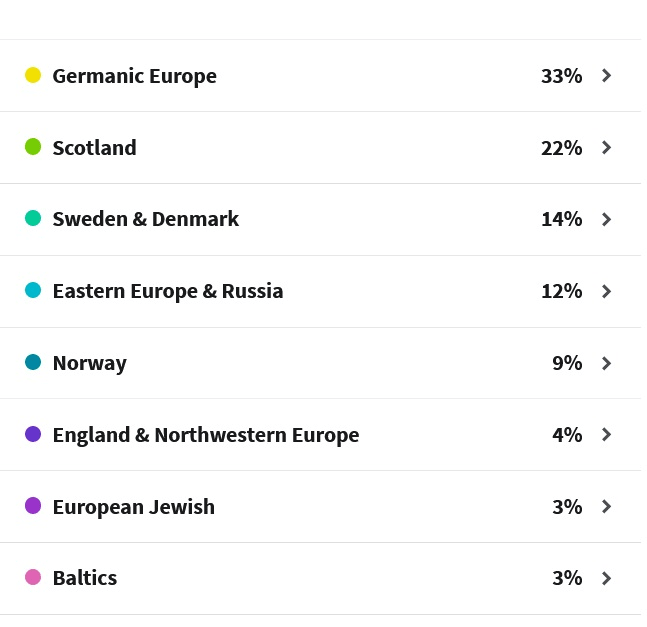
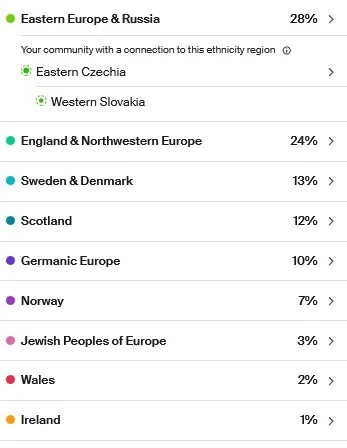
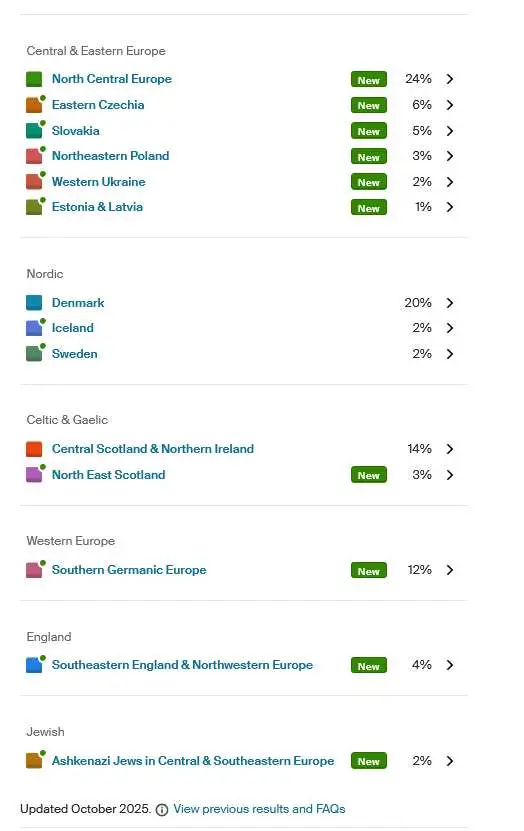
If something like this has happened to you, it is perfectly understandable to wonder what in the world is going on, and ask yourself how your ethnicity estimate can change.
When I first started publishing articles on this website, I was surprised to see how popular the articles about ethnicity quickly became. As it turns out, people really want to know where they come from, and when something doesn't match up - or when an ethnicity estimate changes - it becomes a very big deal.
A person who is proud that their extensive Irish heritage showed up as a large percentage of their ethnicity might be shocked to log in a few months later to see that their Irish might actually be from Scotland or Wales.
If my ethnicity estimate changed, was it wrong before?
Some people have the idea that an ethnicity estimate should perceived as little more than a "novelty" or just something to do for fun. Others take it exceptionally literally and are very upset when it doesn't match what they see in their family tree.
I tend to be somewhere in the middle as far as how important an ethnicity estimate is, or should be, in family tree research. If your ethnicity estimate is very different from what you were expecting, then it deserves a second look.
If your updated ethnicity results still make a lot of sense geographically (i.e. the updated region is very close geographically to where you know your ancestors were from), then you really have nothing to worry about. In this case, it would appear that your Ancestry results align with what you know about your family tree.
If you find that your results reveal a new surprise, or even just an old surprise that you didn't notice before, like a small percentage matching an Indigenous Americas region when you thought all of your family was from Europe, then this can guide you in your family history research.
How accurate is my new ethnicity estimate?
The best way, as always, to be able to gauge the accuracy of your ethnicity estimate is to start building your family tree. Most people don't realize how much fun it is to learn about their ancestors, so I really recommend that you consider at least making a small tree that contains what you already know.
(Check out this article about how to build a family tree on Ancestry, which is the best way to get the most from your Ancestry DNA results: How to Build a Family Tree on Ancestry)
As you get back further, you can see if what you find lines up with what your ethnicity estimate shows. Plus, it's amazing to learn the names of your ancestors, and even find out where they lived.
I recommend using Ancestry to build a tree, especially if you have done your DNA test with them already. You can connect your family tree with your DNA results and get extra features by doing so - it makes research more fun and a lot easier.
To learn more, check out my "DNA Tools" page where I have compiled resources about how to get started with genetic genealogy and DNA testing!
Conclusion
I hope that this post helped you understand a little more about how and why your ethnicity estimate might occasionally change on Ancestry DNA. If you have any questions, or would like to share a story about how your ethnicity changed, and what you learned from it (if applicable), I would encourage you to leave me a comment below.
Thanks for stopping by!
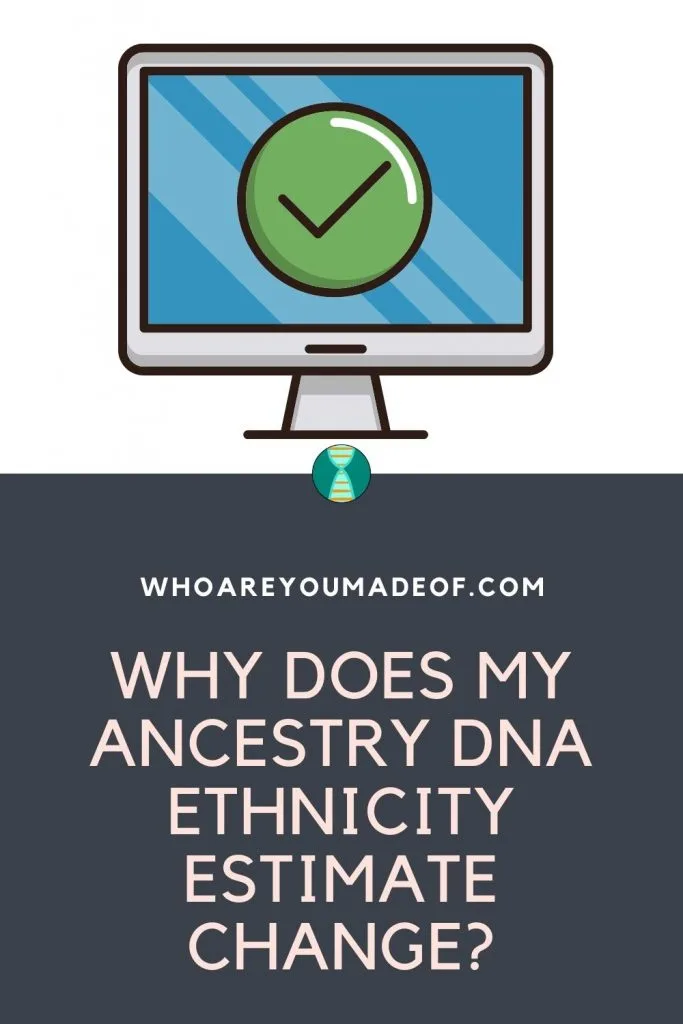
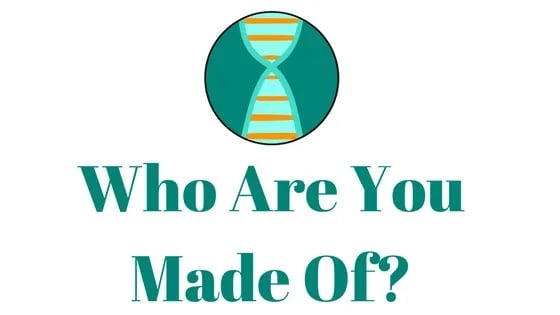
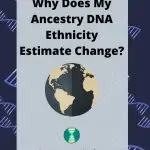

Dennis Cox
Saturday 11th of October 2025
AncestryDNA Origins changed. As to locales, no surprises. As to percentages, big surprise. Ancestry now shows my Irish "Origin" at 50% which is significantly above both MyHeritage (23.9%) and LivingDNA (30.1%). Expect some variation but not that drastic a spread. Bad reference panels for Europe at Ancestry? Yes, I know I have Irish in my maternal lines (grandmother), but less than 2% in my paternal lines (primarily English and French).
BTP
Saturday 11th of October 2025
My DNA results confirmed what I already knew. My maternal grandparents were born in the same area in Eastern Europe, arriving in America from 1890 to 1911. Their families had lived in the same area in Europe generations before that. Therefore, there was little ethnic variation and less room for error.
Shancee D
Sunday 22nd of December 2024
I was definitely not aware that I could look on the site and see all my results change?! It’s been almost 2 years since I did it. Looked today and I’m nothing as of the results I had at first? I still do not understand how my results can change so drastically? For 2 years I thought I knew my heritage and it’s a crock of BS! Did research and all on my results the first time for what ? For nothing. This makes no sense to me.
Rich Ferrar
Wednesday 6th of October 2021
After all the 'guestimates' of my ethnicity, the only thing I hope for is that the next one will have a surprise that'll make me happy. That said, overall, I've been pleased with the tools provided.
Natalie Zett
Sunday 19th of September 2021
Hi Mercedes!
I'm so glad you addressed the newest iteration of Ancestry's ethnicity estimates. I've been doing genealogy/family history for several years and understand that estimates are just that. To date, I've never seen anything too surprising --all four grandparents immigrated from Eastern Europe (Austro-Hungary and Prussia), and I've been able to follow the paper trails for some branches back to the 1400s.
If the paper trails are mostly accurate, I shouldn't see anything other than Eastern Europe, Germanic Europe, and European Jewish, which is what's usually there. That said, I was shocked when I opened the update and saw Portugal 1%. While that's not a high percentage, that's one country I never expected to see in my estimates!
A couple of years ago, I did 23andMe Health and learned that I'm a carrier for Familial Mediterranean Fever (1 variant). According to Mayo Clinic, FMF mostly occurs in people of North African, Jewish, Arab, Armenian, Turkish, Greek, or Italian ancestry. Again, given my family history, I didn't expect to see that.
So, even though it's a stretch, I wonder if Portugal provides a clue as to why I ended up with FMF? The learning never stops with this stuff :) Natalie